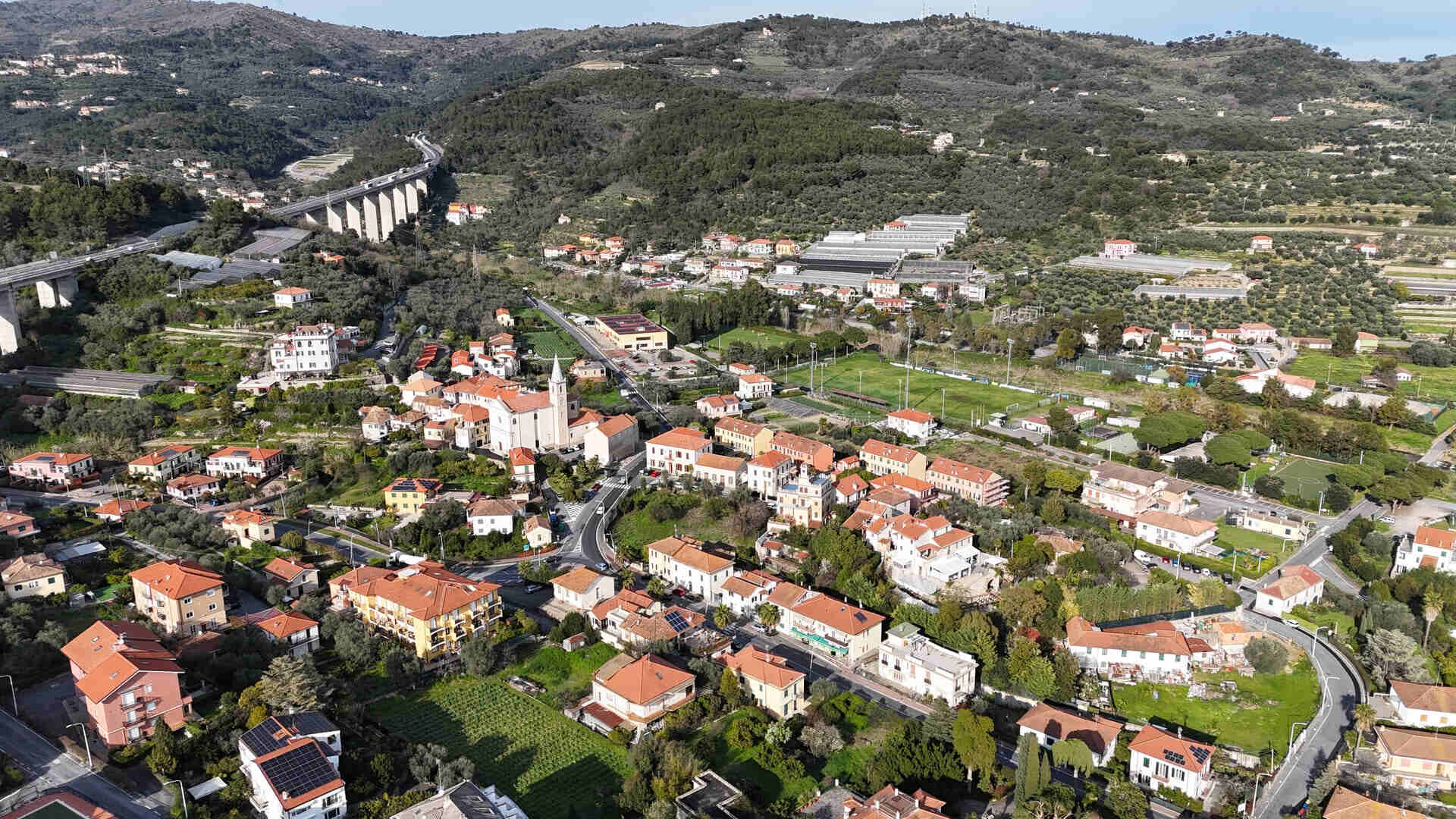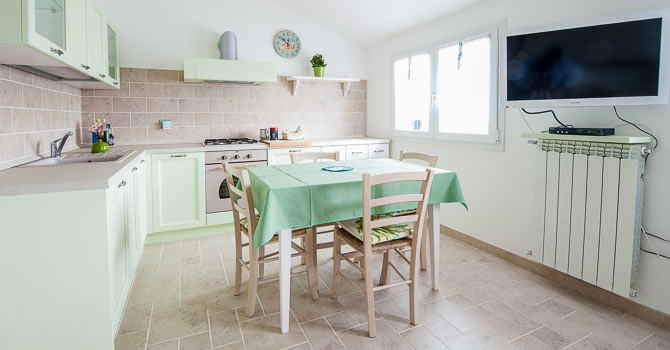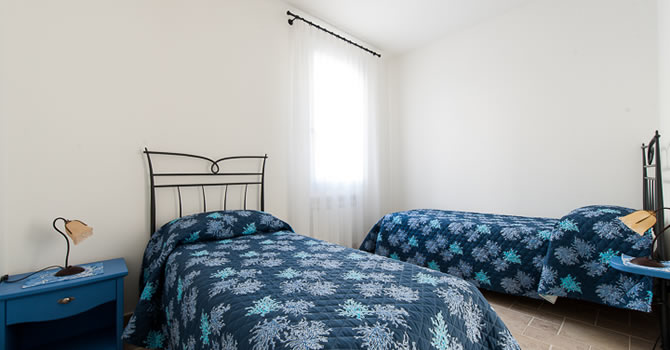
Dianese Gulf Municipalities
What to see in San Bartolomeo al Mare: old town and beaches
April 01, 2025
San Bartolomeo al Mare is one of the best-known villages on the Riviera Ligure di Ponente, in the province of Imperia. Situated between Diano Marina and Cervo, this town in Liguria is a popular destination especially for its well-equipped beaches, pedestrian promenade, and small historic center. If you're wondering what to see in San Bartolomeo al Mare, or what to do during a vacation or short stopover, know that this town overlooking the sea offers more than what it seems at first glance: not only sea and relaxation, but also walks, inland routes, and some traditional events that attract visitors in every season.
In this guide you will find all the information you need to visit San Bartolomeo al Mare: how to get there, what to see in the historic center, what to do in the surrounding area, what are the most beautiful beaches, events not to be missed, and some interesting facts about the village.
- How to get to San Bartolomeo al Mare
- The history of the village
- The Roman Era
- The Middle Ages
- From the Late Middle Ages to the Modern Age
- What to see in San Bartolomeo al Mare: the old town and places to visit
- Shrine of Our Lady of Oak
- Waterfront Walk of Nations
- The historic center
- What to do in San Bartolomeo al Mare
- A day at the beach
- Walks along the coast
- Inland routes: the Incompiuta and scenic trails
- Markets, events and summer evenings
- Excursions to nearby villages
- The beaches of San Bartolomeo al Mare
How to get to San Bartolomeo al Mare[ back to menu ]
San Bartolomeo al Mare is located along the Via Aurelia, between Diano Marina and Cervo, easily reached by car or public transportation.
If you stay at our farmhouse in Diano Marina (discover our vacation apartments), you can get there by car in 5 minutes by following Via Aurelia eastward. If you prefer to walk, a walk along the waterfront connects the two locations in about 30 minutes.
For those coming from outside:
-
By car: A10 Genoa-Ventimiglia highway, San Bartolomeo al Mare exit. From the toll booth to the center of the town takes only a few minutes.
-
By train: Diano Marina train station, then bus or cab about 2 km.
-
By bus: suburban lines connecting Imperia, Diano Marina and Cervo with stops in San Bartolomeo al Mare.

The history of the village[ back to menu ]
The name San Bartolomeo al Mare derives from the saint to whom the parish church is dedicated. Until 1968, however, the village was known by the toponym "San Bartolomeo del Cervo," reflecting its ancient dependence on the neighboring municipality of Cervo.
The traces of pre-Roman times found in the area are not particularly relevant. It is likely that, before the arrival of the Romans, the area was inhabited in scattered hamlets or in the so-called "castellari," small fortified settlements typical of the Ligurian hinterland. Later, the territory was populated by the Liguri Ingauni, who had trade relations with the Carthaginians.
The Roman Era[ back to menu ]
With Roman rule in Liguria, the territory of present-day San Bartolomeo al Mare gained greater importance. In Roman times, in fact, the Steria Valley area included the Lucus Bormani, a sacred forest dedicated to the local deity Borman, where religious rites were held.
St. Bartholomew al Mare was located along the Via Iulia Augusta, one of the most important Roman roads, and served as a mansio, or stopover station for travelers and troops, as confirmed by the Tabula Peutingeriana.
Remains of a Roman settlement have been found at La Rovere, including a large structure consisting of six rooms, a portico and a corridor. The numerous artifacts, including coins and pottery dating from the 1st-2nd centuries AD, testify to the strategic importance of the site for receiving and supplying troops in transit.
In Chiappa, a hamlet of the municipality, a Roman milestone of considerable historical significance has been found, on which the following inscription is engraved:
Emperor Caesar Augustus, acclaimed victorious commander for the tenth time, and in his eleventh tribunicia potestà - 553 miles from Rome.
The Middle Ages[ back to menu ]
After the fall of the Western Roman Empire (476 A.D.), the territory of St. Bartholomew al Mare was plundered and devastated by barbarian populations. Only the intervention of the Byzantine Empire brought back some stability.
Later came the Lombards, who pushed the local populations to take refuge in the highlands to escape raids. With the conquest of the Franks in 774, the area was divided into marches and committees, thus laying the foundation for the future feudal system.
Between the 9th and 10th centuries, the territory suffered new devastation from Saracen raids. To defend themselves, the population again took refuge in the mountains, while anti-Barbarian watchtowers were erected along the coast, some evidence of which can still be seen.
From the Late Middle Ages to the Modern Age[ back to menu ]
Like other towns in the Dianese Gulf, San Bartolomeo al Mare was under the control of the Marquis of Clavesana and the Del Carretto family until the end of the 14th century.
From that time on, the village came under the rule of the Republic of Genoa, following its political and military fortunes until 1797, when it became part of the Ligurian Republic.
In 1805, with the Napoleonic occupation, it entered the territories of the French Empire. From 1815, after the Restoration, San Bartolomeo al Mare was annexed to the Kingdom of Sardinia, and then finally became part of the Kingdom of Italy in 1861.
Flight over San Bartolomeo al mare
What to see in San Bartolomeo al Mare: the old town and places to visit[ back to menu ]
Although best known for its beaches, the municipality of San Bartolomeo al Mare offers some interesting attractions for those wishing to explore the town and its surroundings. From the historic center to places of worship, via the waterfront and green areas, here is what to see in San Bartolomeo al Mare during a visit.
Shrine of Our Lady of Oak[ back to menu ]
The Sanctuary of Our Lady of the Oak is undoubtedly one of the landmarks of San Bartolomeo al Mare and one of the most important religious monuments in Liguria. Located in a tree-lined square, a short walk from the center and easily accessible on foot, the shrine is still a landmark for the local community and visitors.
The history of the shrine is rooted in a very ancient past. Indeed, the area in which it stands was already considered sacred in pre-Roman and Roman times, since it was part of the Lucus Bormani, an ancient forest consecrated to the deity Borman, the god of the woods, and later to Diana. It is no coincidence, then, that the shrine was originally built in the middle of a vast oak grove ("oak" in the local dialect).
The religious building dates back to the 14th century, when it was built as a simple oratory. Its present appearance, however, is the result of several renovations, including the most significant in 1860, when architect Ardissone designed the present façade in the neoclassical style.
Inside the shrine are valuable works, such as the Madonna and Child of the Flemish school and a wooden sculpture of the Virgin, made precisely from oak wood, in homage to the history of the place. Also notable is the fine marble altar, which embellishes the sacred environment.
Every year, on March 8, the patronal feast of Our Lady of the Oak is celebrated here, one of the most heartfelt events in the municipality of San Bartolomeo al Mare. On the occasion, the square comes alive with markets, stalls and religious processions, attracting not only the inhabitants of the village but also visitors from neighboring towns.

Waterfront Walk of Nations[ back to menu ]
Among the things to see and do in San Bartolomeo al Mare, the Promenade Lungomare delle Nazioni is not to be missed. This pedestrian path, flat and overlooking the sea, connects the town center with the border of Diano Marina on one side and Cervo on the other. Perfect for those who enjoy walking, running, or biking, the promenade is lined with gardens, flower beds, and children's play areas.

The historic center[ back to menu ]
The historic center of San Bartolomeo al Mare is developed around the central square, from which some side streets and caruggi (typical Ligurian alleys) start. Although the town has a modern part developed along the coast, the historic center retains the atmosphere of the past, with colorful houses, small stores and bars where you can stop for a break. Ideal for a short walk after a day at the beach or before dinner.
San Bartolomeo Historical Center
What to do in San Bartolomeo al Mare[ back to menu ]
In addition to visiting the historic center and its churches, San Bartolomeo al Mare offers several activities suitable for those seeking a vacation between the sea, nature, and relaxation. Here is an overview of what to do in and around San Bartolomeo al Mare.
A day at the beach[ back to menu ]
The beaches of San Bartolomeo al Mare are the main reason many tourists choose this village on the Riviera di Ponente. The coastline consists of equipped bathing establishments and stretches of free beach. The beaches are of fine sand mixed with gravel and easily accessible even to families with children. Some establishments also offer canoe, pedal boat and sunbed rentals.

Walks along the coast[ back to menu ]
Taking a walk along the Lungomare delle Nazioni is one of the most enjoyable activities in San Bartolomeo al Mare. Long and completely pedestrian, the promenade is perfect for walking, biking or simply relaxing while admiring the view of the Dianese Gulf. You can continue to Diano Marina or push on to Cervo, enjoying a walk between the sea and picturesque views.
Inland routes: the Incompiuta and scenic trails[ back to menu ]
Those who enjoy walking or biking can devote themselves to a few inland routes. From San Bartolomeo al Mare starts the path called "Passeggiata dell'Incompiuta," a bicycle and pedestrian path that connects the village to Imperia, passing along the coast.
For those looking for something more hilly, there are paths among the olive groves that offer beautiful panoramic views and that climb toward the Lighthouse Park or to the higher hamlets of the municipality.
Markets, events and summer evenings[ back to menu ]
During the summer, San Bartolomeo al Mare comes alive with evening markets on the waterfront, family shows, concerts and outdoor cinema. Don't miss the Fiera della Rovere (Oak Fair), which brings stalls, craft exhibits and tastings of typical Ligurian products to the square every year.
San Bartolomeo and the Gulf of Diano
Excursions to nearby villages[ back to menu ]
If you want to extend your visit, San Bartolomeo al Mare is a great starting point for visiting the villages of the Dianese Gulf. In just a few minutes you can reach:
-
Cervo, one of the most beautiful villages in Italy, famous for its castle and the Corallini church.
-
Diano Marina, with a lively center, stores and restaurants.
-
Diano Castello, a medieval village among the hills, perfect for a walk among caruggi and olive groves.
Is it better to visit Diano Marina or San Bartolomeo al Mare? Meanwhile, let us emphasize that these are two very close towns, separated by just 2 km and connected by a convenient seaside promenade. You don't have to choose between one or the other: by staying in Diano Marina, for example at our agritourism, you can easily visit both villages (and more!).
If Diano Marina is perfect for those looking for more action, with plenty of stores, restaurants and equipped beaches, San Bartolomeo al Mare offers a quieter and more relaxed environment, ideal for a stroll or a day at the beach in serenity.
By choosing Diano Marina as your base, you can enjoy the best of both locations without sacrificing convenience.

The beaches of San Bartolomeo al Mare[ back to menu ]
The beaches of San Bartolomeo al Mare are among the most popular on the Riviera di Ponente because of their easy access, shallow waters suitable for children and the presence of well-equipped establishments. Located within walking distance of the center and the waterfront, they represent one of the main attractions of the village.
The coast is dotted with bathing establishments offering all kinds of services to ensure a relaxing day at the beach. The establishments, located along the Promenade Lungomare delle Nazioni. These well-equipped beaches are ideal for families with children, couples and the elderly, thanks to the gently sloping seabed and the services present directly on the beach.
In addition to the establishments, there is no shortage of well-maintained free beaches, easily accessible from the town center and the waterfront. The main free beaches are mainly located at the edge of the shoreline, in the direction of Cervo and Diano Marina. Some stretches of free beach have boardwalks for easy access and public showers, making it possible to enjoy the sea even without renting an umbrella and sunbed.
San Bartolomeo beaches
Listen to all podcasts published on our official channels:






